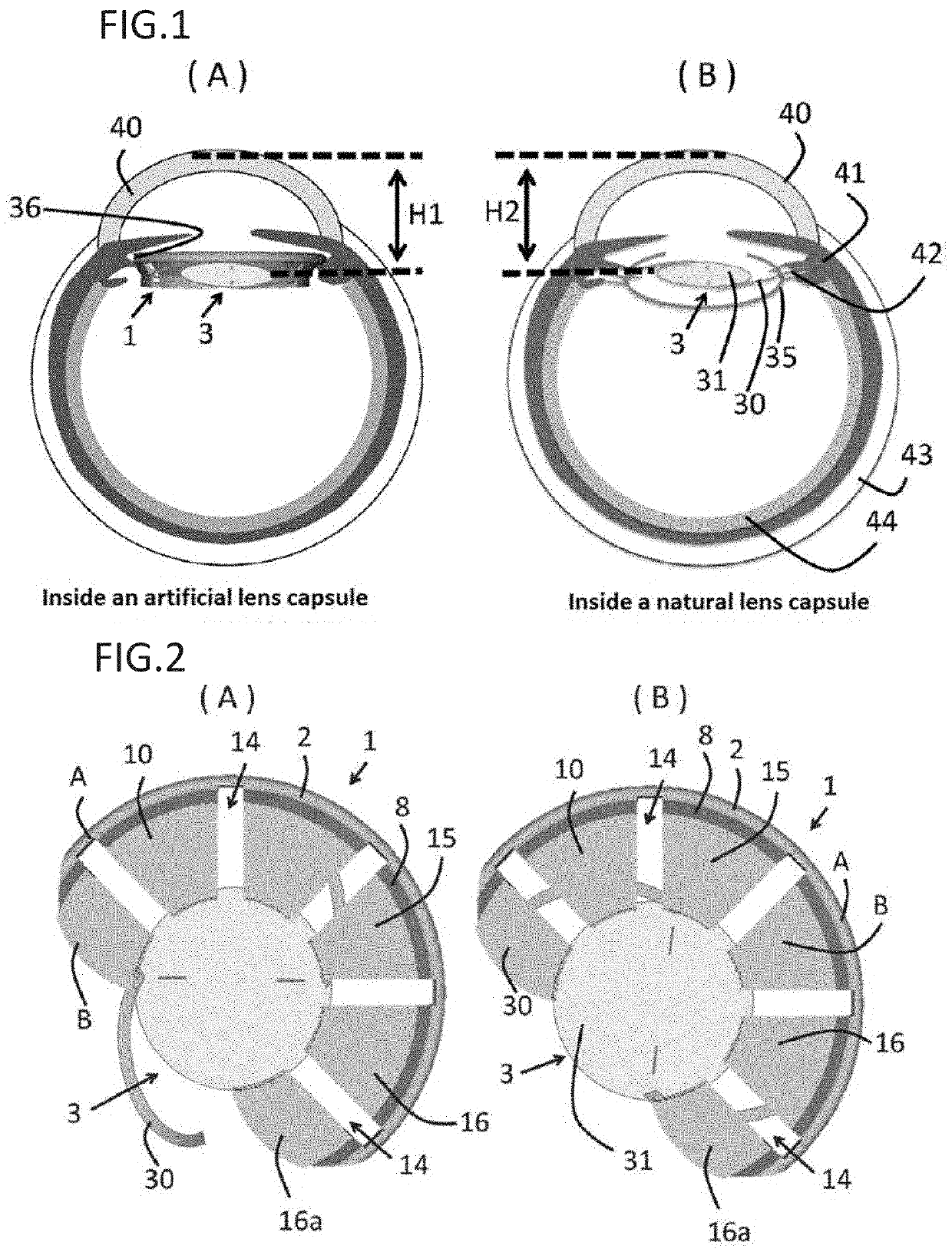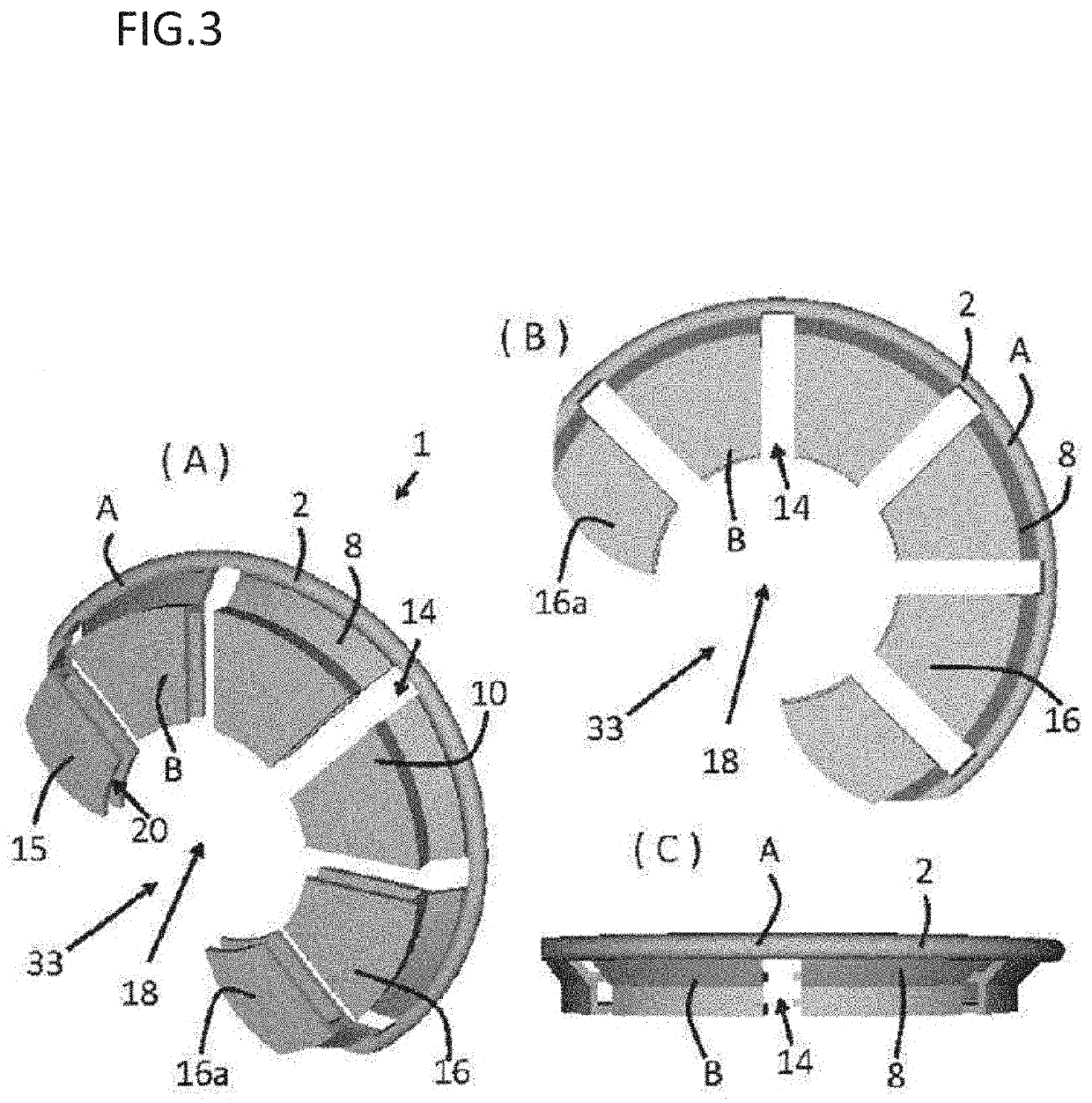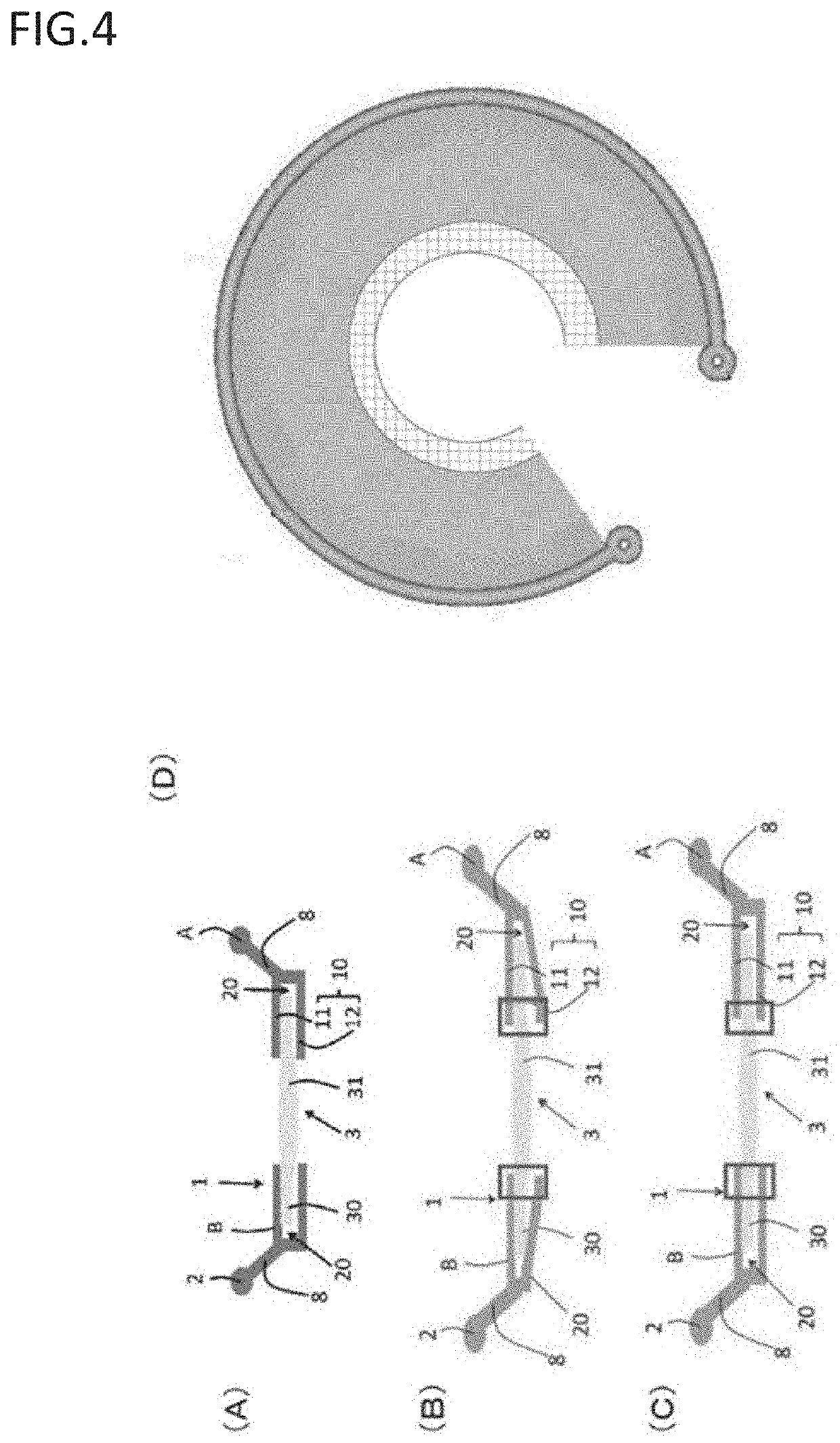Artificial lens capsule
a technology of artificial lens capsules and capsules, applied in the field of ophthalmic surgery, can solve the problems of inability to fix by such alternative methods, and inability to fix by such alternative methods, and achieve the effects of simple device structure, excellent deformation, and simplified structur
- Summary
- Abstract
- Description
- Claims
- Application Information
AI Technical Summary
Benefits of technology
Problems solved by technology
Method used
Image
Examples
embodiment 1
[0080]FIG. 1(A) is a cross-sectional view depicting the intraocular lens fixing device according to an embodiment of the invention when installed. FIG. 1(B) is a cross-sectional view schematically depicting an intraocular lens fixed to a natural lens capsule.
[0081]With conventional intracapsular fixation, the intraocular lens 3 is fixed within the lens capsule 35 so that the optical portion 31 of the intraocular lens 3 is positioned in a cavity inside the wound formed on the anterior capsule of the lens capsule 35, and the peripheral edge of the lens support 30 is positioned at the equator of the lens capsule 35 in place of a lens removed from the within the lens capsule 35 by surgery as depicted in FIG. 1B.
[0082]The intraocular lens fixing device 1 according to the present invention is inserted into an eye with a ruptured or lost lens capsule as depicted in FIG. 1A.
[0083]The intraocular lens fixing device 1 is formed with a material having elasticity and flexibility, so that a phys...
embodiment 2
[0144]While embodiment 1 is a representative embodiment, other embodiments can also be used. As depicted in FIG. 7, the device 1 of embodiment 2 is substantially the same as embodiment 1, with the exception of changing the cross-sectional shape of frame 2 to a rectangular or trapezoidal shape and changing the number of slits 14 in embodiment 1.
[0145]In this embodiment, the frame 2 of the device support (A) is formed in a nearly C-shaped when viewed from the front. The cross-section of the frame 2 is formed in an approximately trapezoidal shape. The intraocular lens housing B coupled to the device support A has the first clamping piece 11 extended toward the center in the radial direction from the frame 2 and the second clamping piece 12 arranged in parallel to the first clamping piece 11 with a space interposed therebetween. The element 16 of the holding piece 10 is formed by the first clamping piece 11 and the second clamping piece 12. A plurality of the elements 16 of the holding ...
embodiment 3
[0148]Embodiment 3 is an embodiment without a slit, which is exemplified in FIG. 8. As depicted in FIG. 8, the device 1 of embodiment 3 is the same as embodiment 1, with the exception of forming operational portions 19 having a through hole on both ends of the frame 2 formed into a C-shape, and not forming the slit 14 on the extended portion 8 of the intraocular lens housing B and on the holding piece 10 extending inside from the inner end of the extended portion 8 in embodiment 1.
[0149]In other words, the frame 2 of the device support A is shaped in nearly a C-shape. The cross-section of the frame 2 is formed in a nearly circular shape. The intraocular lens housing B coupled to the device support A has the extended portion 8 extended toward the center in the radial direction from the frame 2 and the holding piece 10 extended toward the inside from the inner end of the extended portion 8. The holding piece 10 has the first and second clamping pieces 11 and 12 arranged in parallel wi...
PUM
 Login to View More
Login to View More Abstract
Description
Claims
Application Information
 Login to View More
Login to View More - R&D
- Intellectual Property
- Life Sciences
- Materials
- Tech Scout
- Unparalleled Data Quality
- Higher Quality Content
- 60% Fewer Hallucinations
Browse by: Latest US Patents, China's latest patents, Technical Efficacy Thesaurus, Application Domain, Technology Topic, Popular Technical Reports.
© 2025 PatSnap. All rights reserved.Legal|Privacy policy|Modern Slavery Act Transparency Statement|Sitemap|About US| Contact US: help@patsnap.com



